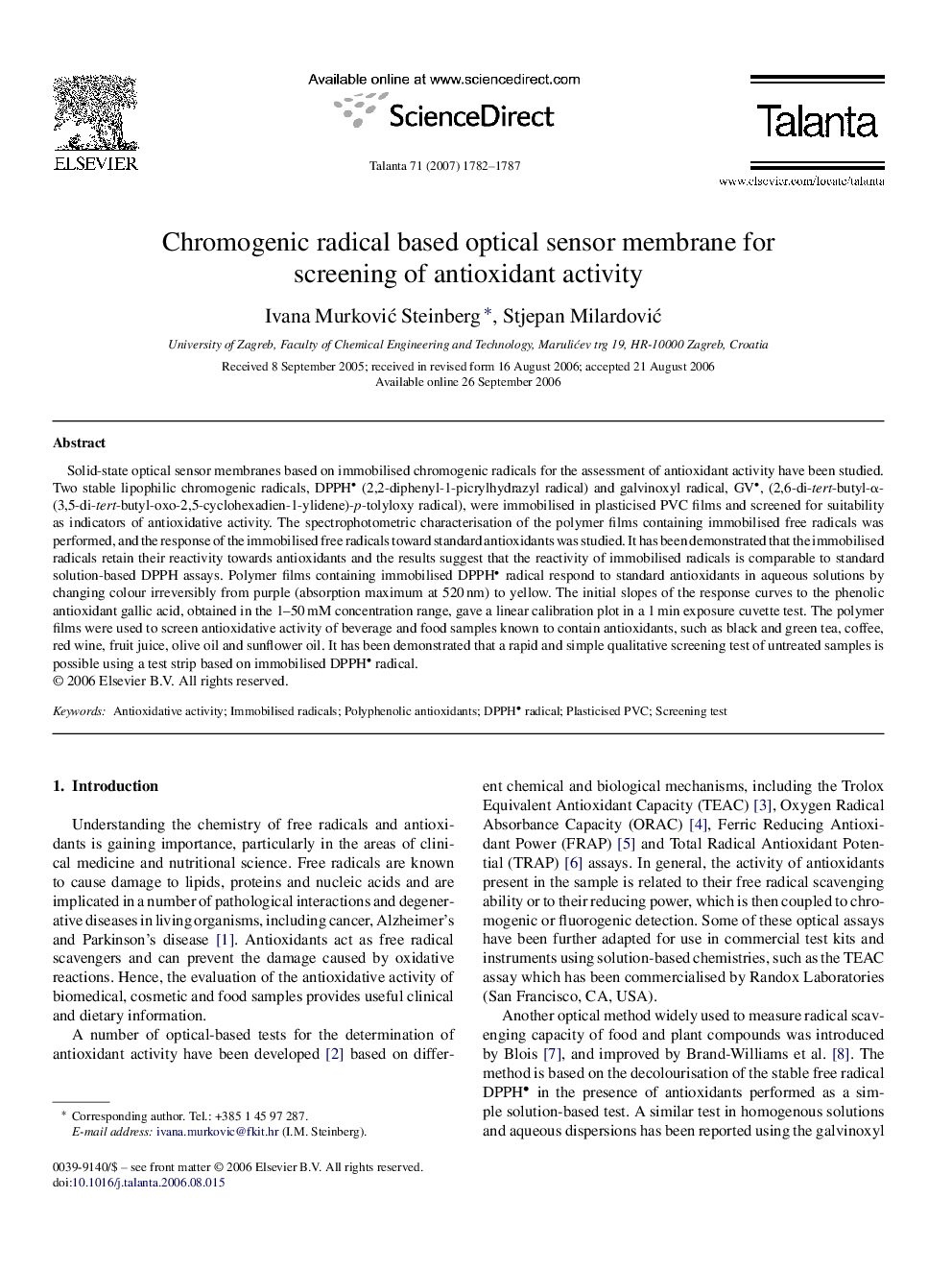| Article ID | Journal | Published Year | Pages | File Type |
|---|---|---|---|---|
| 1245195 | Talanta | 2007 | 6 Pages |
Solid-state optical sensor membranes based on immobilised chromogenic radicals for the assessment of antioxidant activity have been studied. Two stable lipophilic chromogenic radicals, DPPH (2,2-diphenyl-1-picrylhydrazyl radical) and galvinoxyl radical, GV, (2,6-di-tert-butyl-α-(3,5-di-tert-butyl-oxo-2,5-cyclohexadien-1-ylidene)-p-tolyloxy radical), were immobilised in plasticised PVC films and screened for suitability as indicators of antioxidative activity. The spectrophotometric characterisation of the polymer films containing immobilised free radicals was performed, and the response of the immobilised free radicals toward standard antioxidants was studied. It has been demonstrated that the immobilised radicals retain their reactivity towards antioxidants and the results suggest that the reactivity of immobilised radicals is comparable to standard solution-based DPPH assays. Polymer films containing immobilised DPPH radical respond to standard antioxidants in aqueous solutions by changing colour irreversibly from purple (absorption maximum at 520 nm) to yellow. The initial slopes of the response curves to the phenolic antioxidant gallic acid, obtained in the 1–50 mM concentration range, gave a linear calibration plot in a 1 min exposure cuvette test. The polymer films were used to screen antioxidative activity of beverage and food samples known to contain antioxidants, such as black and green tea, coffee, red wine, fruit juice, olive oil and sunflower oil. It has been demonstrated that a rapid and simple qualitative screening test of untreated samples is possible using a test strip based on immobilised DPPH radical.
